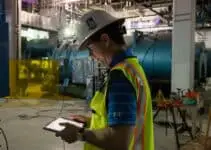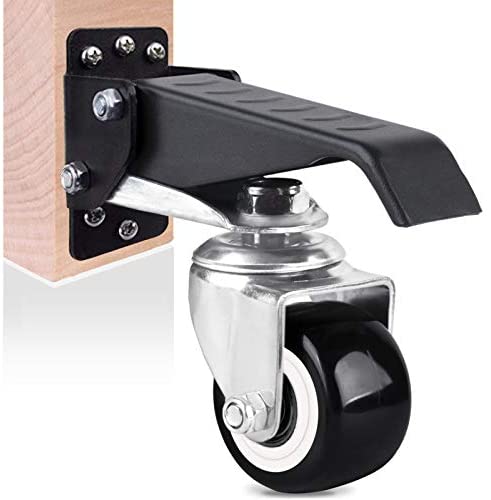The field of construction is bogged down by an ever-shrinking pool of skilled labor and the global workforce shortage doesn’t show any signs of easing. In the US, the construction industry will need to attract more than 546,000 workers on top of the normal hiring pace in order to meet demand in 2023, according to a report by the Associated Builders and Contractors (ABC).
“For every one person who enters the trade, five people are retiring out,” Kevin Morris, Vice President at JBPA, recently told an audience at Procore’s Groundbreak conference.
JBPA Faced Labor Shortages and Outdated Systems
This talent drain affects all contractors, but for the Canadian construction firm, it threatened to magnify an infrastructure problem in Ottawa, Ontario, where most of its projects are based. Ottawa is growing fast — the city expects to welcome half a million immigrants a year by 2025.
In the next decade, the city expects to see an estimated $45 billion in construction. To handle this demand, Ottawa would have to increase its sub-trade workforce by approximately 70,000 people.
“We have way more work than we can possibly get done,” said Morris, summing up the situation.
JBPA wanted to be part of the solution — but of course, they faced the same labor shortage as the rest of the broader construction community in Ottawa. Compounding the problem was the fact that the old ways no longer worked. JBPA needed quicker methods to improve the time and cost involved in delivering quality high-rise projects.
Why JBPA Chose Procore
The company turned to Procore, which offers integrated solutions and provides complete contractor and client transparency in a unified construction management platform. JBPA uses Procore alongside other solutions for handling accounting tasks, payroll and taxes, and photo documentation.
For those purposes, JBPA uses other systems, such as QuickBooks and Multivista (documents on-site construction via photography), both of which integrate with Procore. In fact, the platform easily integrates with more than 400 partners via the Procore App Marketplace, meaning Procore can unite a larger ecosystem of apps and serve as the background for JBPA’s overall technology solution.
Lessons From Manufacturing and Investing in Technology
Construction companies can learn a lot from manufacturers, according to Morris. Manufacturers have significantly increased their productivity by investing in technology and by putting in planning and accountability systems. Construction is similar to manufacturing in the sense that you plan in advance, build to a schedule, obtain or deliver materials, and go through a quality control process.
In other words, if technology can boost manufacturing, it can certainly do the same for construction.
JBPA developed a technology road map to reach its goals. During the first three months, the team implemented the foundation of its new strategy, which focused on project management and financials. The latter was limited to the ability to bill clients, while project management included submittals, RFIs, drawings, correspondence, and everything to do with the architect’s design intent. Site management also calls for daily logs, quality inspections, and safety inspections. To make things easier for field workers, they now use iPads for everything.
Next, JBPA focused on jobsite productivity. Here, the main focus was quality assurance and control, as well as the integration of all necessary systems. In both cases, Procore was unmissable. JBPA developed its QA/QC template and added it to Procore. This not only enabled a smoother sign-off process, but also offered a way to document the inspection should things go wrong.
Another part of JBPA’s growth strategy was to manage a stable supply chain of materials. In the past, it had missed critical deliveries because it didn’t rely on an integrated system where everything was linked in a single place to see whether something was on track. The company is shifting its delivery steps and schedule to Procore because it’s the only solution where everyone and everything is seamlessly integrated on a single platform.
The final branch of JBPA’s road map extends beyond the company to its partners. Because JBPA has seen the benefits of incorporating better technology, it encourages those it works with to also adopt automated methods, especially to improve productivity.
“I am pushing our drywall players to switch from people manually tracing out slabs to using a robot from HP to do it, because HP says they could do it in eight hours. Again, if you could do 35,000 square feet in eight hours with the robot versus four people taking four days, you push productivity out of them,” said Morris.
Getting Worker Buy-In on New Technology
Many managers in construction, especially those who favor technology, can relate to the following scenario: You bring in a new software system or technology guaranteed to increase productivity and decrease wasted hours and money. But it takes time and effort to implement it throughout your workforce, especially if workers are used to doing things manually.
To help achieve widespread adoption, Morris made the effort to visit field offices to ensure that everyone understood and could use the new integrated system, which revolves around Procore. In visiting the field, Morris gathered valuable information and perspectives on how the technology could be implemented in field work. By working with the on-site team, he could identify real opportunities to use the new system and make the transition smoother.
The Results: Bigger Workforce and Revenue
Resetting the business to integrate more technology led to its workforce growing from seven to more than 30 employees. In addition, it allowed JBPA to handle a much higher project load. In November 2021, when Morris joined the organization, JBPA had just finished a $20 million low-rise. A year later, the company had $435 million in projects underway and a pipeline of $2 billion.
“We are very, very fortunate,” said Morris. But it didn’t happen by accident. JBPA’s carefully thought-out strategy to increase productivity and leverage technology has made all the difference.
If you’re interested in learning more about how Procore can help your business, take a video tour today.


